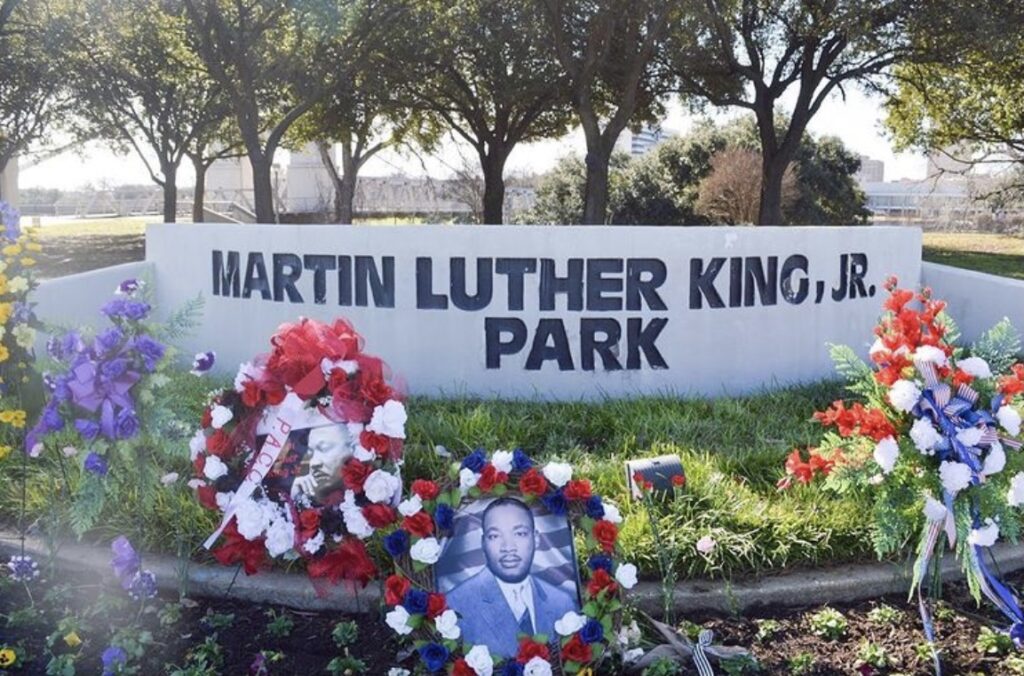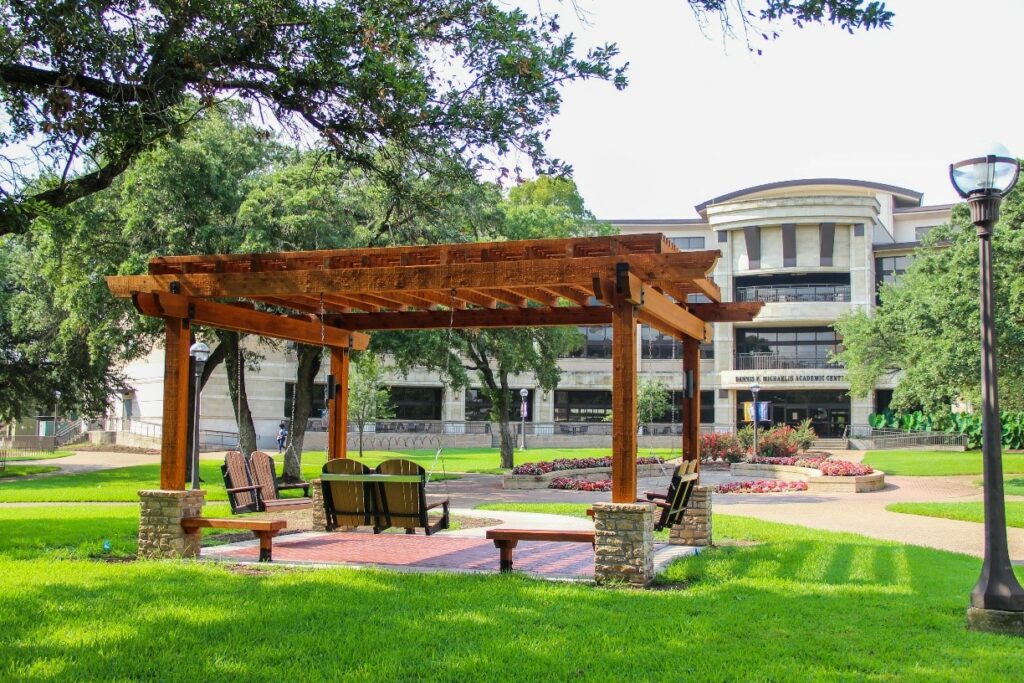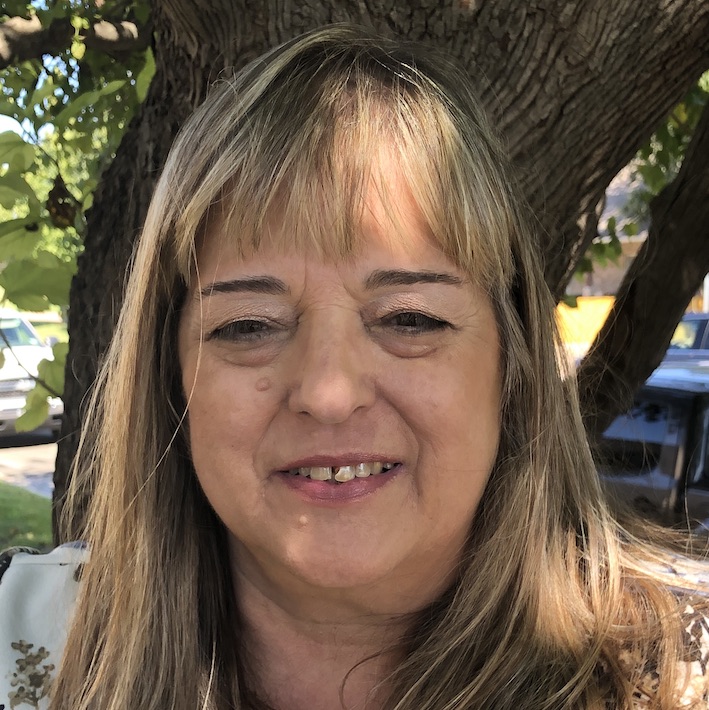By Alice Jauregui
Candiates for the Waco ISD School Board election began filing Wednesday, Jan. 19., the first day of the filing period for two district trustee positions. Filing will open Jan. 28 for an at-large WISD Board position.
Three candidates filed on the first day. Jonathan Grant and Hope Balfa Mustakim filed to represent Trustee District 4, and Emily Iazzetti filed in Trustee District 5.
On May 7, voters will elect one person in each of those districts to serve a three-year term on the Waco ISD Board of Trustees. The deadline for candidates to file for a place on the ballot is 5 p.m. Feb. 18.
District 4 is currently represented by Angela Tekell, who announced last month that she did not plan to seek re-election. Tekell was first elected to the board in 2010.
Iazzetti was appointed to represent District 5 in August following the resignation of Allen Sykes.
In May, voters will also elect someone to serve the final year of the current term for the vacant at-large seat on the Waco ISD school board. The vacancy was created when Cary DuPuy resigned in November. The following month, the school board announced they would leave the position vacant until the May election. The filing period for the at-large position will open Jan. 28 and end at 5 p.m. March 7.
More information about becoming a candidate is available at wacoisd.org/elections. Applications for a place on the ballot can be filed with the superintendent’s office at the Waco ISD Administration Building (501 Franklin Ave., Waco).
The Waco ISD Board of Trustees recently adjusted boundaries of the single-member trustee districts to equalize the number of people in each district following the 2020 Census. A map of the single-member trustee districts along with a description of those changes can be found at wacoisd.org/redistricting.
Alice Jauregui is executive director of communication with Waco ISD.
The Act Locally Waco blog publishes posts with a connection to these aspirations for Waco. If you are interested in writing for the Act Locally Waco Blog, please email the ALW team — [email protected].
Monday, January 17th, is Martin Luther King Jr. Day. This marks the anniversary of the federal day of service and celebrates the legacy of the great civil rights leader. Each year, on the third Monday in January, the MLK Day of Service is observed as a “day on, not a day off.” MLK Day of Service is intended to empower individuals, strengthen communities, bridge barriers, create solutions to social problems, and move us closer to Dr. King’s vision of a “Beloved Community.” Our community can take this unique opportunity to bring people from all walks of life together to listen, learn, serve, and act locally.

Friday, January 14
35th Annual Wreath Laying Ceremony
Dr. Martin Luther King, Jr. Memorial Park- 300 MLK Blvd.
The 35th annual wreath laying ceremony will be a virtual event this year because of the recent COVID-19 surge. Individuals may place a wreath at the monument anytime from January 14 through January 17. Please adhere to City of Waco social distancing guidelines and health protocols.
Monday, January 17
MLK Day of Service – Baylor Campus
Sponsored by Missions and Public Life
Bobo Spiritual Life Center (Parking lot at the corner of S. 5th Street and James Ave., Waco, Texas) 9:00 a.m. to 1:00 p.m.
Virtual service projects and a drive-thru collection site. Visit website for donation list.
Contact [email protected] for more information.
Day of Service to help out the Good Neighbor House
Hosted by Sanger Heights at 23rd & Colcord
Help them complete various projects including light painting, light constructions tasks, some deep cleaning around the house, yardwork, and various other projects. Please review the available slots and sign up.
25th Annual Martin Luther King, Jr. March & Observance
Hosted by Zeta Phi Beta Sorority, Inc. Delta Upsilon Zeta and Phi Beta Sigma Fraternity, Inc. Gamma Omicron Sigma.
Dr. Martin Luther King Blvd. & Elm Ave at 9:00 a.m.
Guest Speaker Chief of Police, Sheryl Victorian. For more information and to RSVP, please visit bit.ly/wacomlkmarch.
Spend MLK day at the Mayborn Museum, 1300 S University Parks Dr
Open Monday at 10 a.m. for free!
Community Day is a perfect opportunity to explore the Discovery Center, Natural History Hall, and Historic Village.
Hosted by Mission Waco / Jubilee Theatre 1319 N. 15th Street, Waco, Texas
10:30-11:45 am: Performances and speakers.
12-1 pm: Pastor Panel Discussion – Lunch is FREE and provided by World Cup Cafe. No need to register for the morning OR the lunch programming.
Youth meet separately. Email [email protected] if you have teenagers interested in joining. Lunch is also FREE!
1:15-3:30 pm: Community Serving Projects: If you’re interested in signing up a group to serve in the afternoon please fill out the google form
6:00 PM
A candlelight vigil will also be held virtually. To obtain a link for the event, email [email protected].

By Natalie Galindo
The Waco Convention Center is turning 50 years old in 2022. A come-and-go reception will be held 3-6 p.m. Jan. 26, in the center’s Brazos Ballroom. Remarks and a retrospective of the center’s history will take place at 4 p.m. The public is invited. Light refreshments will be served.

The convention center’s original grand opening celebration took place in January 1972 and featured a week’s worth of entertainment, with top headliner Peter Nero. The original building, consisting of a much smaller footprint and cost almost $2.6 million to build.
In 1988, McLennan Hall, Bosque Theater, and DeCordova Rooms were added to accommodate larger events, at a cost of $1.2 million.
The building enjoyed a $17-million top to bottom renovation in 2012, which added a new wraparound foyer for McLennan Hall, more lobby space, escalators, and more.
“The Waco Convention Center has been the place for so many Wacoans to make memories over the years,” said Dan Quandt, Waco’s interim conventions and tourism director. “Weddings, graduation ceremonies, quinceañeras, dances, and of course conventions have all been held here. These events become part of our lifelong memories. We look forward to serving Waco for the next fifty years and beyond.”
The public is invited to share their memories through photos of events held at the Waco Convention Center over the years, for possible inclusion in the slide show. Please visit wacocc.com/share-your-memories or drop them by in person at the Waco Convention Center, 100 Washington Avenue. Offices are on the right inside the main doors. For more information, contact Carla Pendergraft, (254) 750-5806.
The Waco Convention Center is a department of the City of Waco.
The Act Locally Waco blog publishes posts with a connection to these aspirations for Waco. If you are interested in writing for the Act Locally Waco Blog, please email the ALW team — [email protected].
By Lisa Elliott
The McLennan Community College Foundation will be joined Tuesday, Jan. 11, by MCC and community leaders to mark the opening of a new outdoor gathering space on the MCC campus. The Greta and Murray Watson, Jr., Arbor will open with a ribbon cutting ceremony at 1:30 p.m. beside the Enrollment Services Center. The ceremony will conclude with hot chocolate and cookies, and the public is invited.

The Watson Arbor project was conceived and funded through the generosity of Brazos Higher Education Service Corp., the student loan financing company founded by Murray Watson, Jr., in 1975. Among other gifts, the company and the Watson family have funded more than $579,000 in endowed scholarships through the MCC Foundation to support the McLennan Presidential Scholars program.
To honor its founder’s lifelong support of higher education, Brazos and the Watson family wished to create an outdoor space where students, faculty and staff at the college could gather. The company’s generosity means no college funds were expended for this beautiful campus enhancement.
Watson was a lawyer, rancher, politician, and philanthropist who had a passion for serving others. He was elected to the Texas State House of Representatives at age 24, shortly after graduating from Baylor Law School. He represented Central Texas in the Texas House until 1963, when he was elected to the Texas Senate, where he served until 1973.
As senator, Watson carried many important pieces of legislation, but he was especially proud of helping create what is now Texas State Technical College (TSTC), and he was a strong advocate for establishing MCC in 1965. Watson passed away in 2018, and his wife, Greta, continues to lead the family’s Mart-based operations, including a cattle company and Watson Feed Store. Their daughter, Missy Larson, also serves on the MCC Foundation Board of Directors.
“We are so grateful to our friends at Brazos Higher Education Service Corporation and the Watson family for their generous donations to our campus and student scholarships. This space will provide an area where our students are able to relax, study and find tranquility in their busy schedules,” said MCC President Johnette McKown. “This is the perfect tribute to the Watson family that cares so deeply about students and their success.”
The MCC Foundation raises public and private support to fund scholarships, faculty and staff professional development and capital projects at the college. To learn more, visit www.mclennan.edu/foundation or contact Executive Director Kim Patterson at 254-299-8606 or [email protected].
The Act Locally Waco blog publishes posts with a connection to these aspirations for Waco. If you are interested in writing for the Act Locally Waco Blog, please email the ALW team — [email protected].

Waco is proud to welcome Olive Door Imports to the Downtown scene. Located at 924 Austin Ave, Olive Door Imports store sells 17th-18th century furniture with a story. Each piece is hand-selected from Europe – places like Denmark, Brussels, Hungary, and other eastern European locations. Owner Shelley Gay says opening the store was a dream 20 years in the making. She chose Waco as the ideal location after a falling in love with the community on a weekend visit. Shelley’s goal is to offer affordable, artistic furniture for the creative who wants to make their space truly their own. According to Shelley, these are “pieces you may not have seen before and may never see again”.
We’d love to see you at the Grand Opening happening January 15th from 6-9 pm! This isn’t your ordinary grand opening: January 15th will also feature stunning artwork by DVLVD LLC. If this name sounds familiar, you may remember an art expo hosted at Cultivate 712 in 2020 or seen any of the DVLVD mural paintings throughout town (the most recent work being the Cactus Rose face, the interior of Milo All day, and the mural on the Dr. Pepper Museum). DVLVD (pronounced Devolved) is a mural and design group based in Waco, TX. The team includes Cade Kegerreis, Cole Henry, Kyle Antis & Kaleb Antis. They specialize in hand-painted works that range from large-scale public art projects to small business storefronts. Founded in 2020, their mission is to bring forward the art of empowered artists to the public. Waco is so pleased to have this team of artists dedicated to unity, diversity and connection. For more information, you can visit their Instagram page @dvlvdmurals or visit the website www.dvlvd.com.
Mark your calendars for this awesome grand opening on Saurday, January 15th – you won’t want to miss it! Art from DVLVD will continue to show through the end of February. Olive Door Imports hopes to feature the work of artists at shows every 6 weeks. Shelley, Brooks, and the team look forward to meeting you and the rest of the Waco community.
By Deneece Ferrales
For many of us, the new year means time to set our new year’s resolution(s) — a goal or set of goals that are generally designed to help one become happier, healthier, more successful, and/or have increased life enjoyment. According to several studies, health goals are the most common resolutions.

In the United States, exercising more, losing weight, and better mental health are among the top five resolutions every year. These are important, especially in light of the COVID pandemic continuing to limit our contact with others and limiting how and when we can participate in healthy activities such as exercise or even the ability to access healthy foods.
Keeping up a healthy exercise routine and healthy eating are imperative both to our physical and our mental health. Unfortunately, despite our best intentions, many of our resolutions will be abandoned before January ends.
The collective wisdom regarding resolutions has always been that discipline is key and that if we fail at keeping a resolution, it is because of poor self-discipline. However, simply telling ourselves to do it does not lead to success. According to US News & World Reports, we normally set resolutions based on our Christmas excesses (eating, failing to get exercise during the holidays, etc.) without preparing ourselves for the changes we plan to make in our lives.
There is a discomfort that comes with change, even when that change leads to feeling better. We have to readjust our schedules for exercise, amend our shopping habits to seek out healthier foods, or make other intentional changes to our daily routines and habits. This is stressful because the act of change, any change, produces emotional friction.
If we have not determined when and how we plan to exercise or made a plan for any grocery shopping changes needed to be able to purchase healthier foods, then we are doomed to fail when we experience that transient discomfort. It is important to plan for the change and give yourself a step-by-step guide to when and how each change will occur. Even with the best plans, transient discomfort will occur, but it is much easier to follow a well-thought-out plan through the change than to add further stress from indecision.
Here are some tips for keeping those healthy new year’s resolutions:
- Turn your broad health resolutions into specific goals with steps for accomplishing those goals. I like using SMART goals (specific, measurable, attainable, realistic, and timed). SMART helps us think out exactly how and when we plan to make our changes and then gives us time limits for accomplishing our goals. So instead of having a resolution that says, “Get more exercise,” your resolution reads, “Take a mile-long walk 4 times a week for the next three months.”
- Think small. Set your goals for something accomplishable. You may want to run in next year’s marathon, but you have not begun to train yet. Setting a goal that is not reachable or that will require work over a long period of time is likely to lead to disappointing results and goal abandonment. It might be better to start with a smaller goal, like running a mile or running 3 times a week, and as you reach each goal, set another until you are ready to run that marathon.
- Consider your why. Setting goals that lead to better health is always a good idea. The meaning of those goals is different for each person. One person may be diabetic and interested in lowering their A1C, while another person may want to increase stamina to be able to participate in more activities. Whatever your reason, this can be what keeps you motivated on those days when you are not feeling it. If your goals revolve around exercise and/or healthier eating, try to stay away from an appearance-focused why.
- Keep it all in the family! Parents have to consider their children’s needs, which are sometimes unpredictable. Setting a health resolution for the whole family makes reaching your goals a “family affair” and prevents you from having to choose between your family and your own personal growth.
The Robert Wood Johnson Foundation published a report titled, “State of Childhood Obesity: Prioritizing Children’s Health During the Pandemic.” The report states that more than 15% of children (1 in 7) between the ages of 10 and 17 are obese. Childhood obesity leads to a host of health problems in adulthood. For this reason, including the children in developing healthy goals now will give them a foundation for continuing healthy practices.
If setting a family health resolution, call a family meeting so everyone has input. Define what a resolution is so that the entire family understands the importance of setting the goal. Talk about your family’s good health habits and bad ones to determine the best family resolution.
- Write down your goals/resolutions. Writing down your resolutions helps make your goals more intentional. Looking back at the goals can help motivate you and remind you how far you have come toward achieving your goals.
- Share your resolution with others. Telling other people about your goals can help hold you accountable. It can also help you find others who are working on similar goals so that you can achieve them together. Find someone else who wants to exercise and schedule walks or grocery shop together.
- Use technology to your advantage. There are a myriad of apps for your phone that can support you in your quest to meet your goals.
- Look at your goals frequently and review your progress. There are a number of free goal tracking apps that can assist you with this.
- It’s not over just because you veer off course. We all veer off course sometimes. Maybe you had a bad week and weren’t able to walk or you were not able to shop at your regular grocery store and thus had to buy more pre-packaged and less healthy foods. It’s okay. Look back and celebrate the progress you have made and how far you have come then readjust so that you are able to continue moving forward despite the disruption.
Let’s make 2022 a year of healthier living by learning to plan, set, and achieve our health goals. Have a happy and healthy new year!

Deneece Ferrales, Ph.D., is director of health initiatives with Prosper Waco.

FREE SAFE RIDES HOME ON NEW YEAR’S EVE!
Call now to schedule your FREE ride to and/or from your NYE destination!
Same-day requests accepted (based upon availability)
For those needing an unexpected safe ride, Tow King also partners with us to offer free vehicle tows
home. Vehicle tows can be arranged by calling Tow King directly at (254) 666-5484.
The idea behind Safe Ride Home is to support responsible drinking and, ultimately, save lives. Our goal
is simple… to keep the streets of Waco safe on New Year’s Eve. If even one life is spared because
someone chose to secure a safe ride home, then our purpose was accomplished.
Safe Ride Home was made possible thanks to the generous contributions of Ben E. Keith Company and
donations from Subway and Chuy’s.
New Year, New Chairs!
New, comfortable, and sturdy chairs for YOU
We’re saving you a seat, and here’s your chance to name it!
Be a part of the Brazos Theatre chair campaign! Our theater is in desperate need of new chairs (IYKYK!!). And this is a great opportunity to give you, your business, or someone you love a permanent marker at the Brazos. Your name, a sentiment, anniversary date, or the name of another person you wish to honor will be engraved on a plaque placed on the back of every theatre seat you sponsor! Sponsorship opportunities start at just $65. Get all the info here!
Help make the Brazos Theatre a more comfortable space for you and your fellow theater goers in 2022 and beyond!
Upcoming Events at Brazos Theatre
NEW YEAR’S DAY IMPROV COMEDY SHOW!
Saturday, January 1st
7:30 PM (Doors open 7:00)
What better way to bring in a new year?? Come join us for a very special and very funny night! And this first show of 2022 is HALF PRICE! There’s no one we’d rather start this year off with than our wonderful patrons – old and new! Get tickets by clicking here!
Comedy at the Brazos
A Stand Up Comedy Showcase
Saturday, January 15th
8:00 PM (Doors open 7:30)
Dallas comedian Paul Smith will join us to host some of Central Texas’ (and beyond!) brightest comedic talent. BYOB, and our snack bar will be open. Doors open at 7:30pm for General Admission seating. Tickets available soon! Rated: R
The Office Trivia Night
Saturday, January 22nd
7:30 PM (Doors open 7:00)
Relive some of your favorite moments from the television show The Office in pub style trivia challenges. Build a team of 2-6 members and get signed up soon! Space for this event is limited. Sign up by clicking here. Prizes for the first place team and costume contest winners!
Ashley Bean Thornton started Act Locally Waco with the mission of being a central hub of information to help spread awareness of news and events. So what do we feature and what are the best ways to be featured by Act Locally Waco?
What kind of events does Act Locally Waco share?
- Free or low cost events that are family friendly
- Educational opportunities
- Volunteer opportunities
- Charity events
- Live music, trivia nights, & festivals
What kind of events will not be approved by Act Locally Waco?
- Political events
- Sales for private businesses
- Events located outside of Waco
- Events that are not family friendly
Ways to be featured
- Act Locally Waco Blog
- How to be featured: Email our Director of Communications at [email protected] any event details and ideally an event link to either a website or a landing page. We need to be able to copy the text so short press releases are helpful but PDF documents that can’t be highlighted and copied are not helpful. JPG or PNG files are also not helpful because we can’t easily copy the text.
- How to be featured: Email our Director of Communications at [email protected] any event details and ideally an event link to either a website or a landing page. We need to be able to copy the text so short press releases are helpful but PDF documents that can’t be highlighted and copied are not helpful. JPG or PNG files are also not helpful because we can’t easily copy the text.
- The Whole Enchilada, The Act Locally Waco email newsletter
- How to be featured: Email our Director of Communications at [email protected] any event details and ideally an event link to either a website or a landing page.
- How to be featured: Email our Director of Communications at [email protected] any event details and ideally an event link to either a website or a landing page.
- Act Locally Waco Facebook Page
- Make Act Locally Waco an event co-host so that we are informed of the event and so it shows up on our profile.
- Email our Director of Communications at [email protected] with a Facebook event link, we can’t share PDFs or long press releases on Facebook.
- The Act Locally Waco segment on KWBU
- How to be featured: Email our Director of Communications at [email protected] any event details. We will share a few events that are going on that week.
We can’t always feature your events if we don’t receive the right format. If you need help with sharing your event information, please email our Director of Communication at [email protected].
Event Details
The Cultural Committee of the Hispanic Leaders’ Network has been meeting over the past few weeks to plan a community event for all. This year will be their first annual Posada and Tamale Competition! Las Posadas is a traditional event celebrated by many Hispanic countries on the 9 days leading up to Christmas—join them for food, music, and fun for all ages! There will be a cash prize for Waco’s Best Tamal!
Where: South Waco Recreation Center, 2815 Speight Ave.
When: December 18, 3-6 PM
Event Information: First Annual Posada & Tamale Competition | Facebook

What are Las Posadas?
Posada comes from the Spanish word for “lodging”. During the Christmas season it is a 9 day celebration prior to Christmas Day that commemorates the Nativity story.

Where is Las Posadas celebrated?
It is celebrated chiefly in Latin America including Mexico, Guatemala, Honduras, Cuba, Spain and by Latinos in the US. For example, there is a big Las Posadas celebration in San Antonio, Texas each year.
In Mexico, it has been celebrated for over 400 years starting in 1586.

Does it have a relationship to Indigenous culture?
Yes! According to the Aztec Calendar, Tonantzin Guadalupe (the mother of the gods) was celebrated on the winter solstice, while their most important deity, the sun god Huitzilopochtli, was born during the month of December (panquetzaliztli). The parallel in time between this native celebration and the celebration of Christmas lent itself to an almost-seamless merging of the two holidays.

What does Las Posadas involve?
Usually, there is a re-enactment where 2 people dress up as Mary and Joseph. Certain houses are designated to be “inns”; the head of the procession carries a candle inside a paper shade. They can be followed by attendants such as angels and shepherds and are followed by musicians. Children carry poinsettias.
The actors travel to one house each night for nine nights. At each house, the resident responds by singing a song and the pair are recognized and allowed to enter.
At the end of each night, Christmas carols are sung, children break open pinatas and everyone sits for a feast.

Why is Hispanic Leaders’ Network sponsoring this event?
HLN wants to help create spaces where Latinos in Waco can celebrate their culture and welcome the greater Waco Community to learn and be enriched by the diversity and inclusivity our city.
